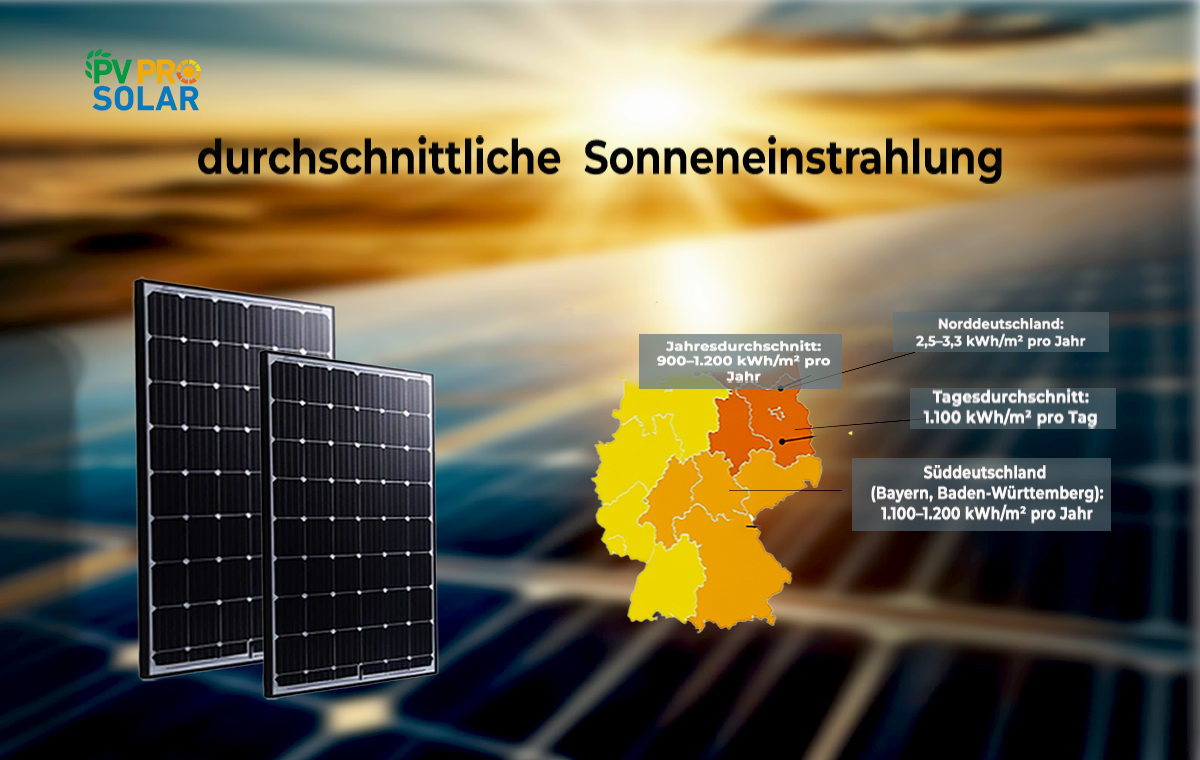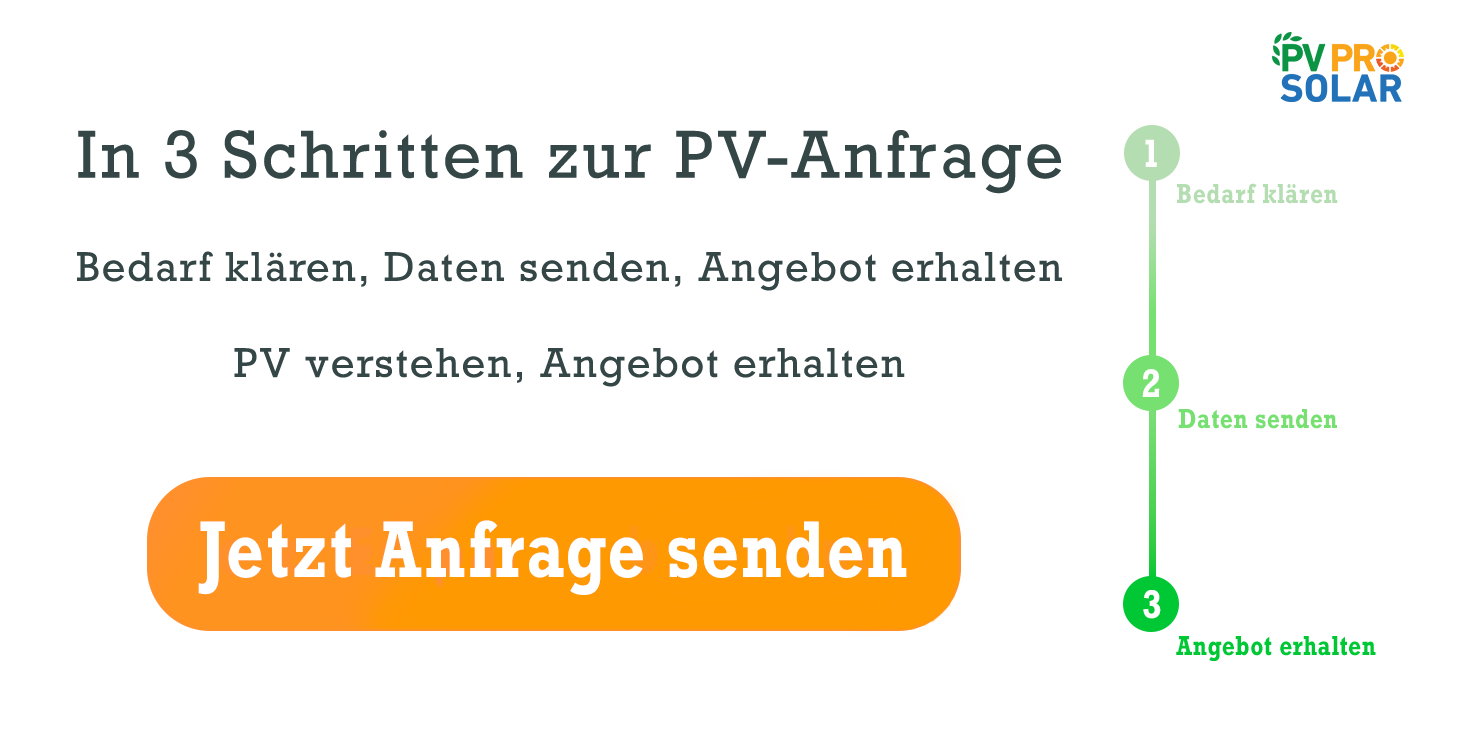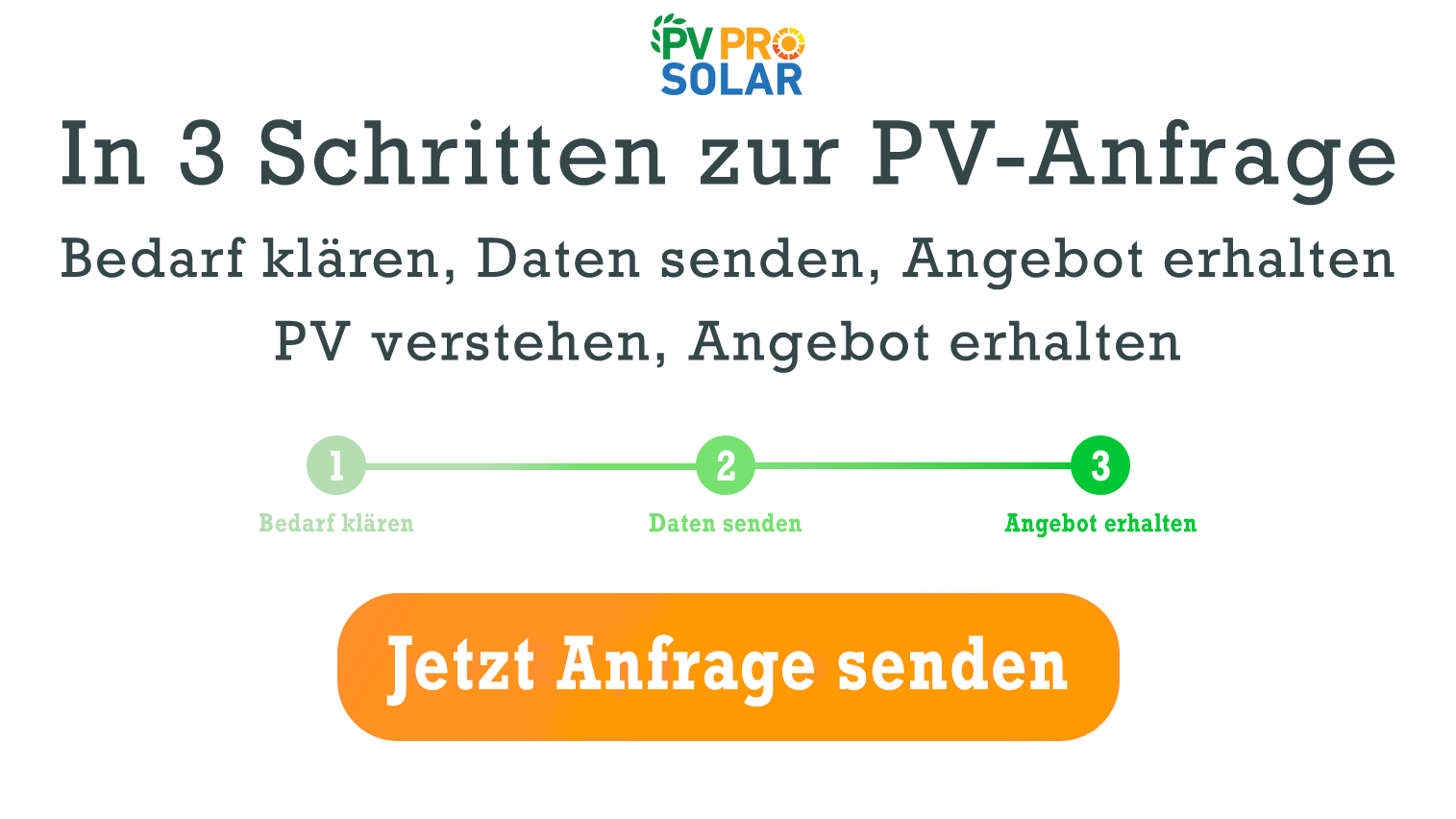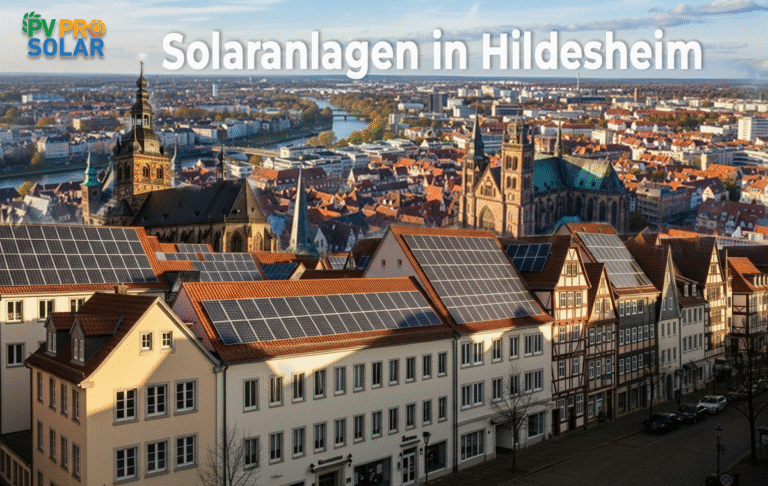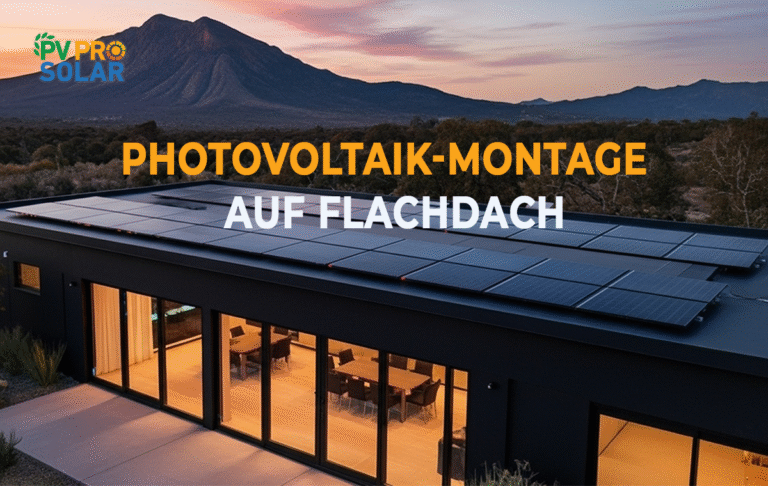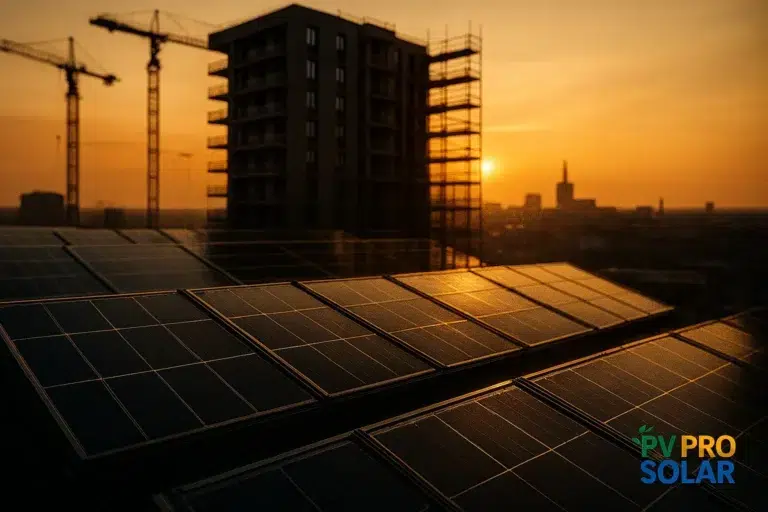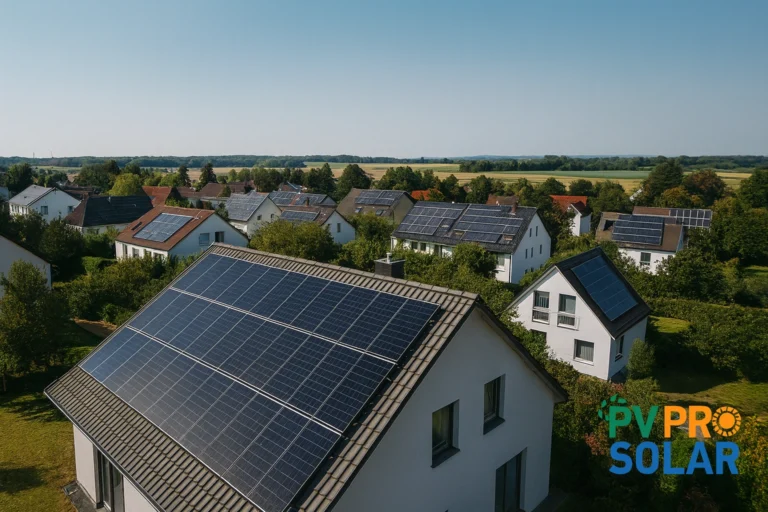What is the average solar radiation in Germany for panels?
Solar radiation is the key factor for the performance of photovoltaic systems in Germany. Regional differences, seasons, and technical factors directly influence electricity yield. Anyone investing in solar energy must understand not only the average solar radiation but also how to optimize panel orientation, avoid shading, and ensure proper maintenance. These measures help maximize energy production and secure long-term profitability.
How is solar radiation measured in Germany?
- Global radiation: Sum of direct and diffuse solar radiation on a horizontal surface.
- Unit: Kilowatt-hours per square meter per year (kWh/m²/a).
- Measurement methods: Combination of satellite data, ground measurements, and calculation models.
- Satellite measurements: Provide nationwide, current data for PV planning.
- Ground stations: Validate satellite data and provide local accuracy.
- Data sources: German Weather Service (DWD), Fraunhofer ISE, Senec Solar Magazine.
What is the average solar radiation in Germany?
- Nationwide average: About 1,100 kWh/m²/a.
- Timeframe: 2001–2020 (Fraunhofer ISE, DWD).
- Influencing factors: Latitude, altitude, season, weather, shading.
- Europe comparison: Germany is below Southern Europe (e.g., Spain 1,700 kWh/m²/a) but above northern countries like Sweden.
How does geographic location affect solar radiation?
Bavaria
- Average: 1,150–1,200 kWh/m²/a
- Advantage: Southern location, higher solar yields
- Example: Munich 1,180 kWh/m²/a
Baden-Württemberg
- Average: 1,130–1,180 kWh/m²/a
- Good conditions for PV systems in Stuttgart and Freiburg
North Rhine-Westphalia
- Average: 1,050–1,100 kWh/m²/a
- More cloud cover reduces annual radiation
Hamburg
- Average: ~1,000 kWh/m²/a
- Northern location: lower solar radiation, larger yield differences
Schleswig-Holstein
- Average: 980–1,020 kWh/m²/a
- Coastal wind can cool PV modules, minimal efficiency impact
What role do seasons play for photovoltaic systems?
- Summer (May–August): Highest radiation, e.g., June 160–170 kWh/m²
- Winter (December–February): Lowest radiation, ~15–25 kWh/m²
- Spring & Autumn: Moderate yield, weather changes affect daily output
- Annual average: ~1,100 kWh/m²/a
- Practical note: Panels still produce electricity under cloudy skies, but efficiency drops 10–50%.
How does panel orientation affect yield?
- Optimal orientation: South, tilt angle depending on latitude (30°–40°)
- East-West orientation: More uniform daily output, ideal for self-consumption
- Flat roofs: Panels can be mounted with adjustable tilt
- Deviation: North-facing reduces output by up to 40%
What technical factors determine PV efficiency?
- Module types:
- Monocrystalline: 18–22% efficiency, high output with limited space
- Polycrystalline: 15–18%, lower cost, slightly lower efficiency
- Thin-film: 10–12%, good performance under diffuse light
- Inverters: 95–99% efficiency, critical for overall system
- Temperature: High temperatures reduce efficiency
- Shading: Even small shadows significantly reduce yield
How can you optimize the output of a PV system?
- Site analysis: Check solar radiation, shading, roof slope
- Orientation & tilt: Adjust based on latitude
- Cleaning & maintenance: Remove dust, leaves, snow regularly
- Monitoring: Real-time performance tracking, early error detection
- Tracking systems: Panels follow the sun, +10–25% yield possible
Economic considerations of PV systems in Germany
- Investment costs: 1,200–1,800 €/kWp including installation
- Incentives: KfW loans, EEG feed-in tariff, regional subsidies
- Self-consumption vs. feed-in: Self-consumption often more economical with rising electricity prices
- Payback period: 7–12 years depending on system size and location
- ROI example: 5 kWp system in Bavaria produces 5,500 kWh/year → approx. €1,200 annual savings
Long-term trends & climate change
- Historical data: Slight increase in solar radiation since 1980
- Causes: Less cloud cover, climate changes
- Impact: PV systems could deliver higher yields in the future
- Adaptation: Plan future systems based on long-term weather data
Practical examples
- Private building: 10 kWp system in Munich → 11,500 kWh/year, 60% self-consumption
- Commercial: 50 kWp system on warehouse in Stuttgart → 55,000 kWh/year, 70% grid feed-in
- Municipal: 500 kWp system on sports center → 575,000 kWh/year, 460 t CO₂ savings
The average solar radiation in Germany allows efficient photovoltaic systems. Careful planning, considering regional differences, optimal panel orientation, and regular maintenance maximizes energy output. Investors should account for technical factors, seasons, and economics. With site analysis, modern equipment, and monitoring, high long-term yields are achievable. PV systems provide sustainable energy and represent a profitable investment for the future.
A 5 kWp system produces 4,000–5,500 kWh/year depending on location. Southern states achieve higher values.
Bavaria: up to 1,200 kWh/m²/year. Schleswig-Holstein: ~1,000 kWh/m²/year.
Yes, diffuse radiation produces electricity, but output is reduced.
Typically 25–30 years, with ~0.5% power loss per year.
Remove snow, check tilt angle, use east-west orientation for consistent yield. How much electricity can a 5 kWp PV system produce in Germany?
Which region in Germany has the highest solar radiation?
Can PV systems generate electricity under cloudy skies?
How long do modern PV modules last?
How can PV systems be optimized in winter?
